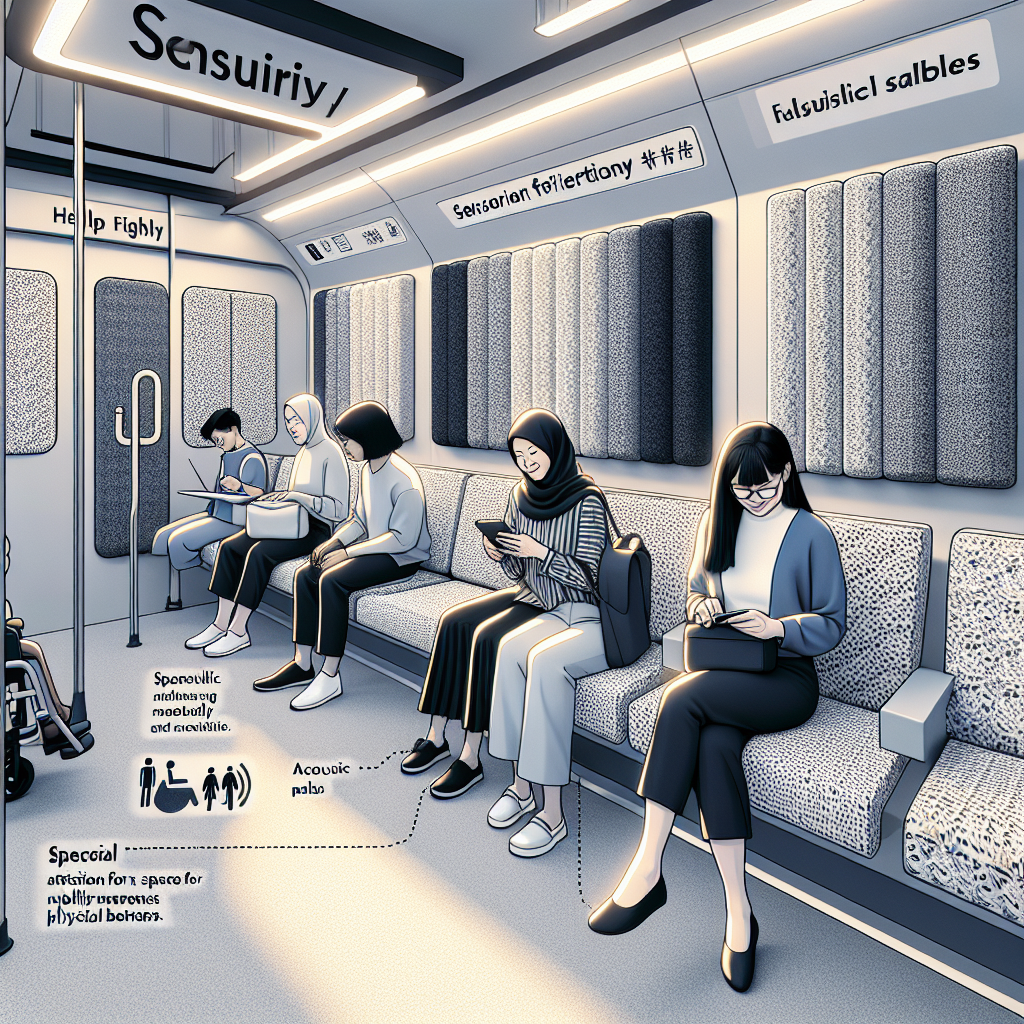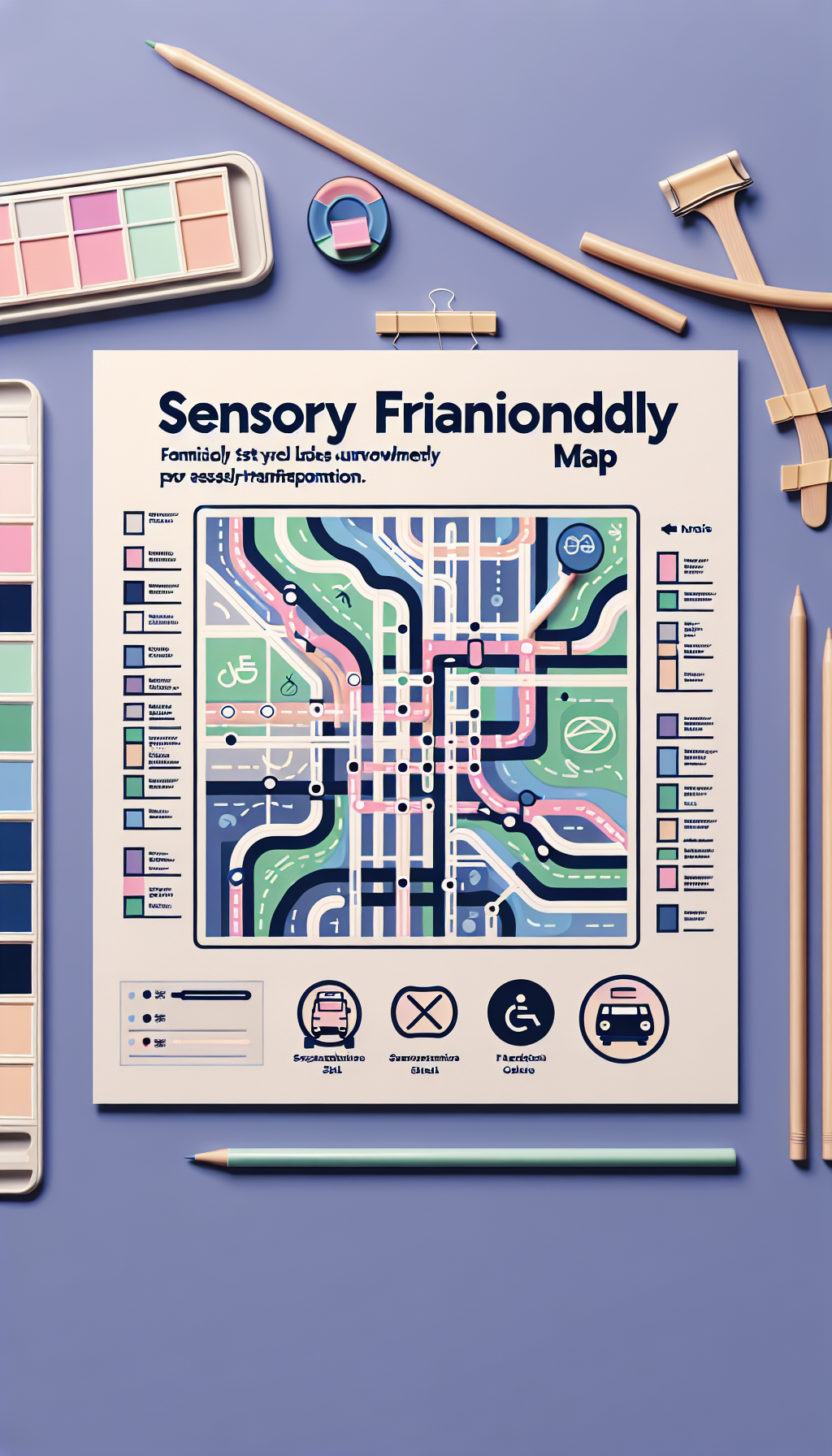Public transportation systems are the veins of a city, providing essential mobility for millions of people daily. However, for some individuals, particularly those with sensory processing disorders, anxiety, autism, or PTSD, navigating these systems can be overwhelming. Sensory-friendly approaches to public transportation design can significantly enhance the travel experience for these individuals, making it more accessible, comfortable, and inclusive.
Understanding Sensory Processing
Sensory processing refers to the way the nervous system receives messages from the senses and turns them into appropriate motor and behavioral responses. For people with sensory processing difficulties, the world can seem too loud, too bright, or too fast, leading to anxiety, discomfort, or even pain. Our senses are fundamental to how we experience and interact with our environment, and this is why sensory-friendly designs are crucial in public spaces.
In addition to impacting individuals with sensory processing disorders, the design of public spaces can also affect those with other health concerns. For example, brain health is intricately connected to our sensory experiences. A well-designed environment can promote calmness and reduce cognitive overload, which is beneficial for everyone, but especially those with neurological conditions.
Sensory Challenges in Public Transportation
Public transportation can be a sensory-rich environment. The sounds of announcements, the brightness of lights, the movement of the vehicle, and the proximity to other passengers can all contribute to sensory overload. To create a more inclusive system, it’s essential to understand these challenges and address them in design.
Noise Control
Noise is one of the most significant sources of discomfort in public transportation. Strategies for noise reduction might include using sound-absorbing materials in the construction of vehicles and stations, providing quiet zones on platforms, and employing technology to produce clearer, more soothing announcement systems.
Lighting
Lighting should be designed to reduce glare and provide a calming atmosphere. This can be achieved through the use of natural lighting where possible, and by selecting artificial lighting options that mimic natural light. Dimmable and color-adjustable lights can also help accommodate passengers’ needs at different times of the day.
Visual Cues
Clear visual cues can help passengers navigate transportation systems more easily. This includes high-contrast signage, non-cluttered maps, and intuitive symbols that are universally understood. By reducing cognitive load, these design elements can make travel less stressful.
Personal Space
In crowded vehicles, personal space is often compromised, which can be distressing. Designing seating arrangements and handrails that allow for personal space can help. Additionally, creating designated areas for those who need a quieter, less crowded environment can be beneficial.
Implementing Sensory-Friendly Design Features
To address these challenges, a multi-faceted approach to design is necessary. Here are some strategies that can be implemented:
-
Materials and Textures: Use materials that absorb sound and reduce vibration. Seats with textured materials can provide tactile feedback and comfort.
-
Color and Visual Design: Employ calming colors and avoid visually overwhelming patterns. Use color coding to aid in navigation while keeping the overall aesthetic soothing.
-
Spatial Design: Provide open spaces where possible to prevent crowding. Designate ‘sensory breaks’ areas where passengers can retreat to if feeling overwhelmed.
-
Technology: Integrate technology to provide real-time updates and assistive tools, such as apps that guide passengers through the transportation system with personalized, sensory-friendly routes.
External Resources for Further Information
For those interested in the intersection of sensory processing and design, the following resources provide valuable insights:
- An exploration of sensory design principles in public spaces
- Guidelines on creating sensory-friendly environments
- Research on the impact of sensory environments on behavior
The Benefits of Sensory-Friendly Design
By incorporating sensory-friendly design, public transportation can become more accessible for all. Benefits include increased independence for individuals with sensory sensitivities, reduced stress for all passengers, and a more inclusive society.
This approach aligns with broader health and wellness trends, such as understanding the benefits of multisensory environments in dementia care and the role of sensory experiences in language acquisition.
Case Studies and Real-World Examples
Examining real-world examples can provide valuable insights into the practical application of sensory-friendly design:
-
Stockholm’s Subway System: Known for its attention to art and design, it also incorporates elements that reduce noise and visual clutter, making it more navigable for individuals with sensory sensitivities.
-
Portland’s TriMet Buses: These buses feature improved lighting, color-coded seating, and clear signage to aid all passengers in their travel experience.
-
London’s Quiet Tube Carriages: A pilot project aimed at providing a less crowded, quieter environment for passengers who may benefit from a sensory-friendly space.
Collaborative Efforts and Community Involvement
Creating sensory-friendly transportation requires collaboration between designers, health professionals, and the community. Public input is crucial to understanding the needs of those with sensory sensitivities. Workshops and pilot programs can provide feedback and guide the design process.
Conclusion
Sensory-friendly design in public transportation is not just about supporting those with specific sensory needs; it’s about improving the travel experience for everyone. By considering the sensory impact of public spaces, cities can become more inclusive, and public transportation can truly serve the entire community.
For more information on creating inclusive environments and supporting sensory health, visit Sensory Health and discover how sensory-based strategies can aid in emotional regulation and pain management.



